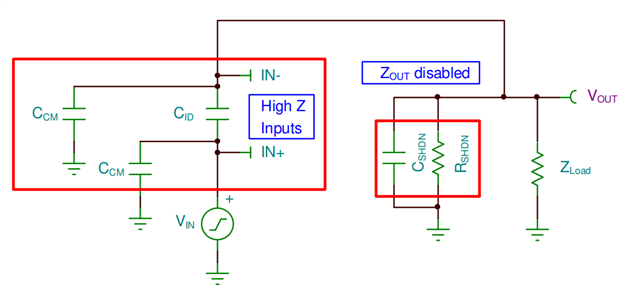The TLV9152S includes a shutdown function.
I'm willing to use this amplifier to adjust the input voltage received from a standard voltage reference of 2.5 V.
The adjusted output voltage of the TLV9152S (for example 5 V) will be buffered by a following 1:1 amplifier which also has a shutdown feature.
This second amplifier might be destroyed if any input voltage is applied during shutdown.
Therefore I’m planning to switch-off the TLV9512S into shutdown mode. I‘m expecting that the output of the TLV9152S will go into an high impedance mode, i.e. no longer delivering any current to the following OP – fine this second OP will be saved.
But now I have the same problem with the inputs of the TLV9152S. With this amplifier being in shutdown mode, the feedback loop will not be closed any longer. Therefore, the voltage difference between the 2 input pins will be undetermined.
Since the TLV9152S being still powered with its supply voltages, the input voltage will be in the specified voltage range. But what effect will be seen, caused by the undetermined voltage difference between the two input pins?
And what currents are flowing into the +In of the TLV9152S (as function of the applied signal voltage)? If these input currents are greater than the quiescent current of the TLV9152S the reduction of supply current due to shutdown will be reduced significantly.
Could you please advise me some possible solution?


